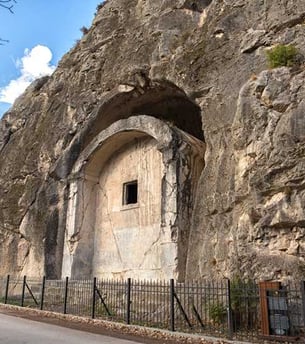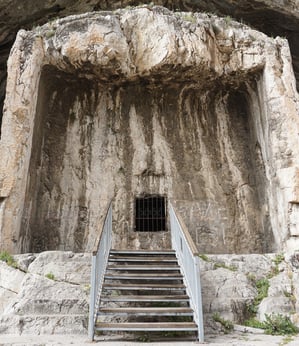
Not Your Ordinary City, But an Epic Tale
Amasya






Amasya Kastle
Pontik Rock Tombs
Borabay Caves

More About Amasya...
Amasya Castle (Harşena Castle): Perched on Harşena Mountain, this ancient fortress offers stunning views of Amasya and the Yeşilırmak River. It has been used by civilizations like the Hittites, Byzantines, and Ottomans, and features secret tunnels, cisterns, and ruins.
Pontic Rock Tombs: These grand tombs were carved into the cliffs during the Pontic Kingdom. Likely built for royalty, they stand as iconic symbols of Amasya, offering a glimpse into ancient architectural techniques.
Yalıboyu Houses: These picturesque Ottoman-style houses line the banks of the Yeşilırmak River. Their white facades and wooden designs reflect the charm of traditional Turkish architecture.
Amasya Museum: A treasure trove of artifacts, this museum displays relics from the Hittite, Roman, Byzantine, and Ottoman periods, including mummies and ancient tools.
Ferhat and Şirin Water Canal: An aqueduct linked to the famous love story of Ferhat and Şirin. Legend says Ferhat built it to bring water to Şirin’s village, symbolizing his love.
Bimarhane (Darüşşifa): An Ottoman mental hospital and medical school known for its artistic stonework. It was a center for healing using music therapy.
Bayezid II Mosque and Complex: Built in 1486, this mosque is an excellent example of Ottoman architecture, featuring a library, fountain, and stunning interior decoration.
Hazeranlar Mansion: A well-preserved Ottoman-era mansion that now serves as a museum. It showcases traditional living spaces and historical artifacts from the 19th century.
Gökmedrese Mosque: A 13th-century mosque built during the Seljuk period, renowned for its intricate stone carvings and turquoise decorations.
Burmalı Minare Mosque: This unique Seljuk mosque is named for its twisted (burmalı) minaret, a rare architectural feature from the period.
Amasya Clock Tower: Built in the late 19th century, this Ottoman clock tower stands as a beloved landmark near the city center, close to the Alçak Köprü.
Aynalı Cave: A natural cave named for its reflective rock surfaces. It was used as a shelter and religious sanctuary in ancient times.
Kral Kaya Mezarları (King Rock Tombs): These monumental rock-cut tombs were likely burial sites for Pontic kings. Visitors can hike to explore their majestic carvings.
Borabay Lake and Caves: This stunning natural lake, surrounded by caves and pine forests, is a peaceful retreat and a favorite spot for outdoor activities.
Çakallar Tepesi (Jackals' Hill): A prehistoric archaeological site containing ruins of ancient settlements and artifacts, shedding light on early human history in the region.
Alçak Köprü (Low Bridge): This stone bridge was built during the Ottoman era and spans the Yeşilırmak River, blending history with functionality.
Mağdenus Bridge: A Roman-era bridge that showcases ancient engineering and still stands as a testament to the Romans’ architectural skill.
Hatuniye Mosque and Complex: Commissioned by Sultan Bayezid II's wife, this mosque is admired for its harmonious design and the surrounding social facilities.
Hamamözü Thermal Springs: These historical thermal baths are not only a place for relaxation but are also believed to have healing properties, attracting visitors seeking wellness.
Şehzadeler Park: This modern park celebrates Amasya’s history as a city where Ottoman princes (şehzadeler) were trained. Statues and displays honor these figures.

Don't forget to follow us from our social media accounts to explore Turkey's beauties.
© 2024. All rights reserved.
